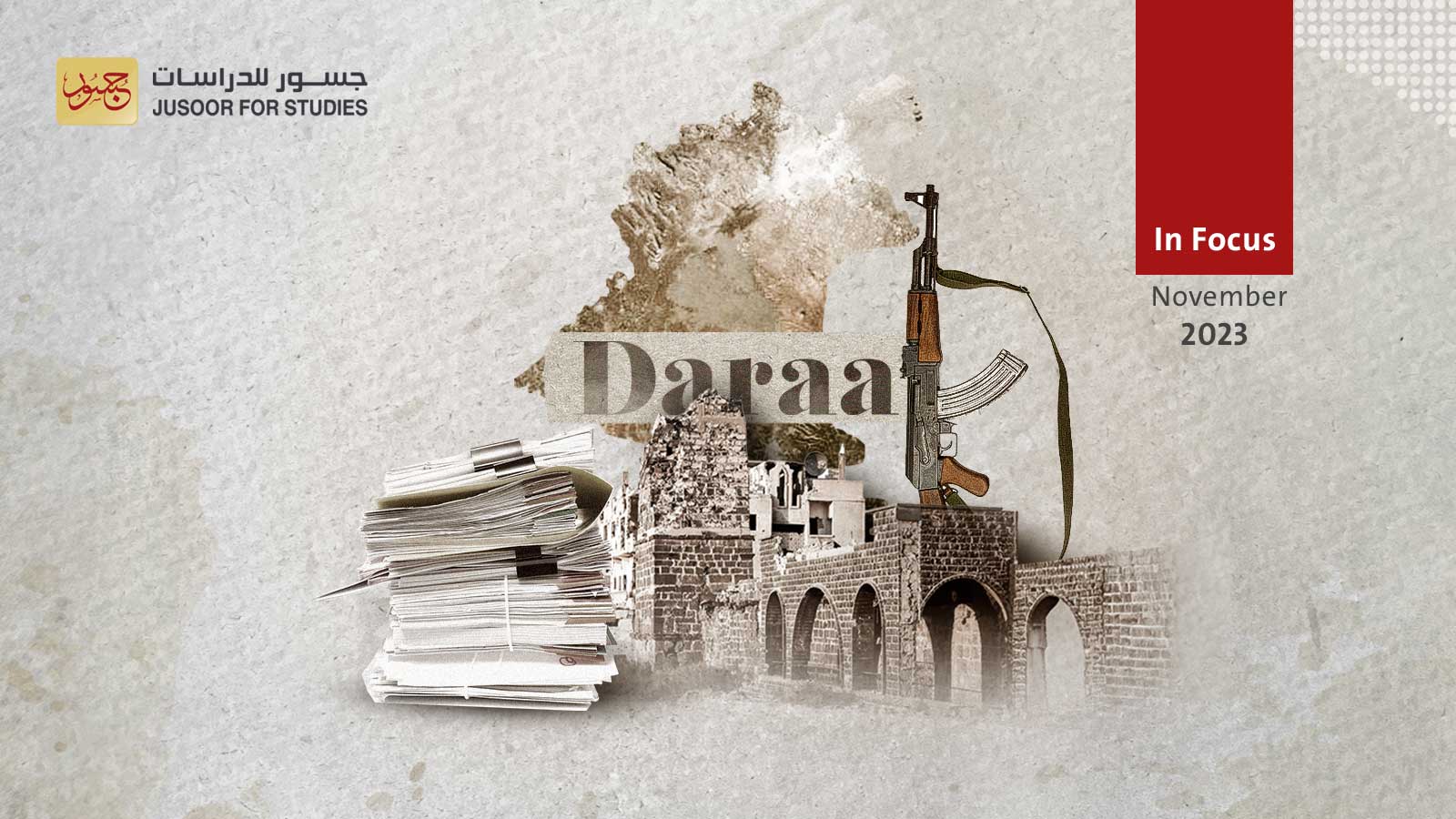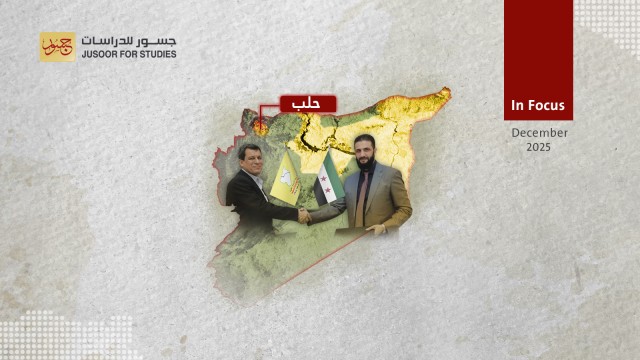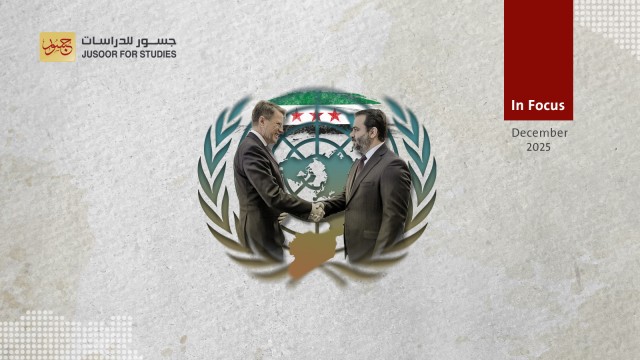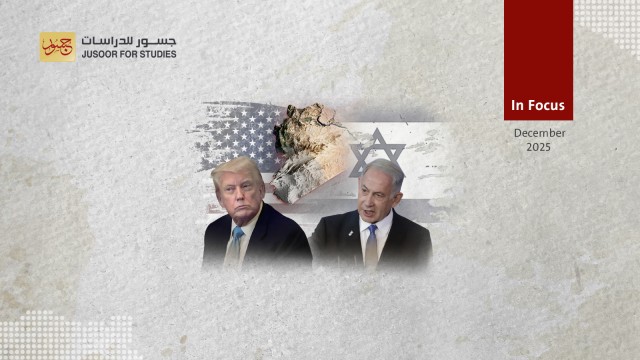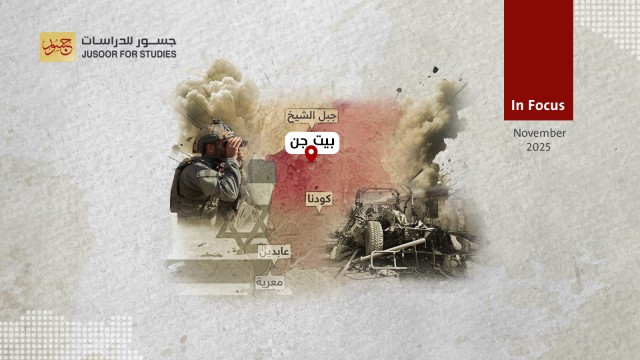Local Initiatives to Organize Daraa's Military and Civil Affairs
The Daraa Governorate southern Syria is witnessing movements at the level of central committees, coinciding with the ongoing momentum in Swayda since the end of August 2023. These committees in the governorate are striving to establish a greater mechanism of coordination and cooperation among themselves. Meanwhile, figures from the governorate residing in the United States are working to form a civil council to manage its affairs. These movements remain separate from each other, yet they converge in their aim to block the Syrian regime and Iranian militias from exploiting the current situation, as well as to catch up with the Swayda movement.
On November 4, a meeting was convened in the city of Tafas, organized by the Central Committee in the western countryside of Daraa. It included local military leaders from former opposition factions, some of whom are currently coordinating their activities with the Syrian regime's forces and security apparatus, as well as Russian forces. Representatives from the Central Committees in the eastern countryside and Daraa city also attended.
The meeting discussed several key issues, including rejecting internal disputes that have exacerbated the chaos and security instability, and ways to fully cooperate and coordinate with those leading the Swayda movement. This includes planning visits by prominent figures to the city and developing necessary mechanisms for this in future meetings. Additionally, the attendants of the meeting focused on preventing the Syrian regime and Iranian militias from further infiltrating southern Syria under the pretext of pursuing ISIS elements, and putting an end to the recruitment and conscription operations carried out by these militias in the region, exploiting the difficult living conditions.
On November 2, the formation of "The Supreme Council of Daraa Governorate" was announced by a number of independent figures residing in the United States. However, it remains a project under establishment, indicating efforts by the residents of the governorate to find representation for themselves, leveraging the current circumstances.
Since the outbreak of the war in Ukraine, Iran has increasingly engaged in southern Syria. It has taken control over numerous military units and continuously sends reinforcements to them, such as the 82nd Brigade of the 24th Division in Sheikh Miskin, the 112th Brigade of the "5th Mechanized Division" in Nawa, and the 61st Brigade directly under the General Command. This also includes the 9th Division, headquartered in Sanamayn and spread throughout Daraa.
Indeed, the Central Committees' invitation to the Eighth Brigade to participate in the Tafas meeting and subsequent meetings is mostly linked to the necessity of representing various cities and towns of the governorate. This ensures the success of the coordination mechanism being established to end assassinations, kidnappings, and various security issues exploited by the regime and Iranian militias. Furthermore, the participation of the Eighth Brigade is deemed essential if the local forces in Daraa aim to coordinate with Swayda in the future, as this requires first addressing the issues between the brigade and the people of Swayda.
Local forces in Daraa are facing significant challenges in their ambitious steps to reactivate their role and presence in the southern Syrian scene. This is especially true given that Iran is unlikely to cease its attempts to completely dominate the region. Iran's strategies include recruiting cells, carrying out assassinations, controlling military units, and deploying its affiliated militias. These actions by Iran represent a major obstacle to the efforts of local forces in Daraa to assert their influence and stabilize the region.
Ultimately, local forces in Daraa have opportunities that could enable them to assert themselves as key players in the current local and regional circumstances. For instance, their efforts at coordination and organization might be welcomed by Russia as a means to temper Iranian influence in the southern region. However, the meetings of the Central Committees in Daraa alone are insufficient to bring about an internal change. It is essential to have coordination or communication with the movements carried out by civil and political entities abroad to form a civil entity representing the governorate. Such an approach would compel both international and local parties to take the ongoing movements seriously, especially since their objectives align with those of the Swayda movement. This alignment and international engagement could significantly impact the strategic landscape in southern Syria.

